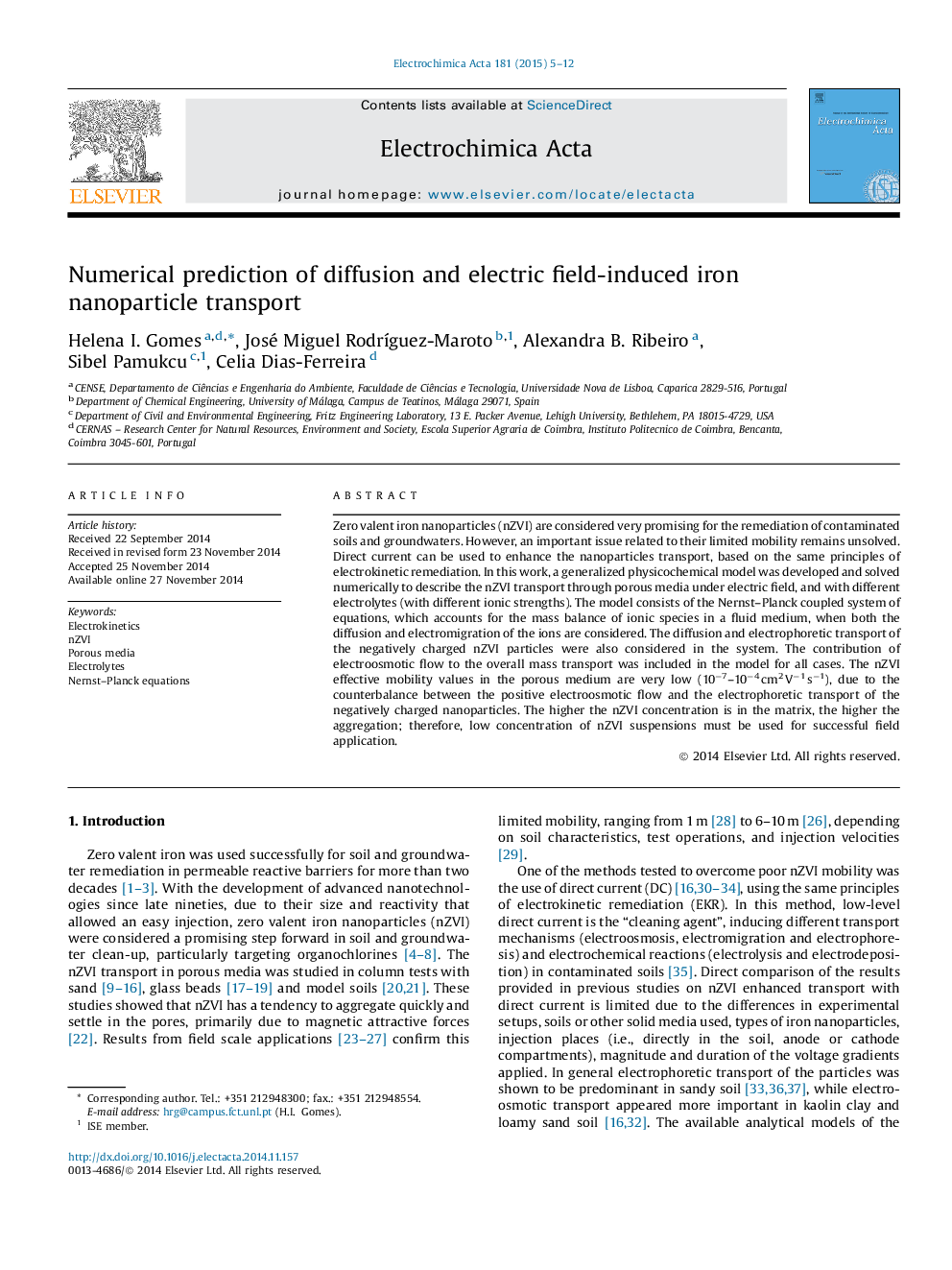| Article ID | Journal | Published Year | Pages | File Type |
|---|---|---|---|---|
| 183466 | Electrochimica Acta | 2015 | 8 Pages |
•Numerical model describes the nZVI transport by diffusion and under electric fields.•Data from different porosity media and electrolytes were used to validate the model.•Diffusion, electromigration, electrophoresis and electroosmosis were considered.•Aggregation of nZVI particles due to high suspension concentrations.•Electrophoretic transport of the nZVI is counteracted by electroosmosis.
Zero valent iron nanoparticles (nZVI) are considered very promising for the remediation of contaminated soils and groundwaters. However, an important issue related to their limited mobility remains unsolved. Direct current can be used to enhance the nanoparticles transport, based on the same principles of electrokinetic remediation. In this work, a generalized physicochemical model was developed and solved numerically to describe the nZVI transport through porous media under electric field, and with different electrolytes (with different ionic strengths). The model consists of the Nernst–Planck coupled system of equations, which accounts for the mass balance of ionic species in a fluid medium, when both the diffusion and electromigration of the ions are considered. The diffusion and electrophoretic transport of the negatively charged nZVI particles were also considered in the system. The contribution of electroosmotic flow to the overall mass transport was included in the model for all cases. The nZVI effective mobility values in the porous medium are very low (10−7–10−4 cm2 V−1 s−1), due to the counterbalance between the positive electroosmotic flow and the electrophoretic transport of the negatively charged nanoparticles. The higher the nZVI concentration is in the matrix, the higher the aggregation; therefore, low concentration of nZVI suspensions must be used for successful field application.
